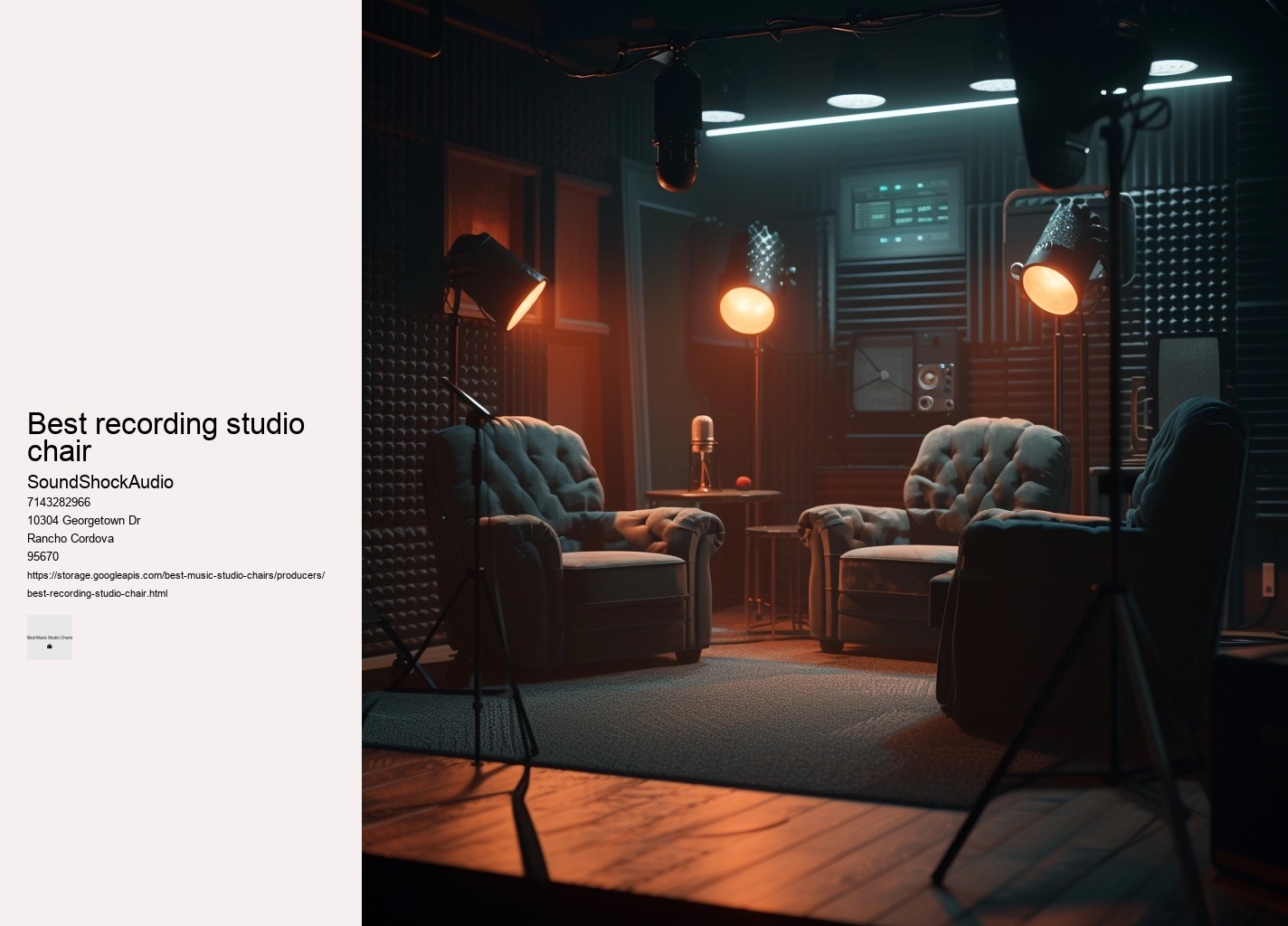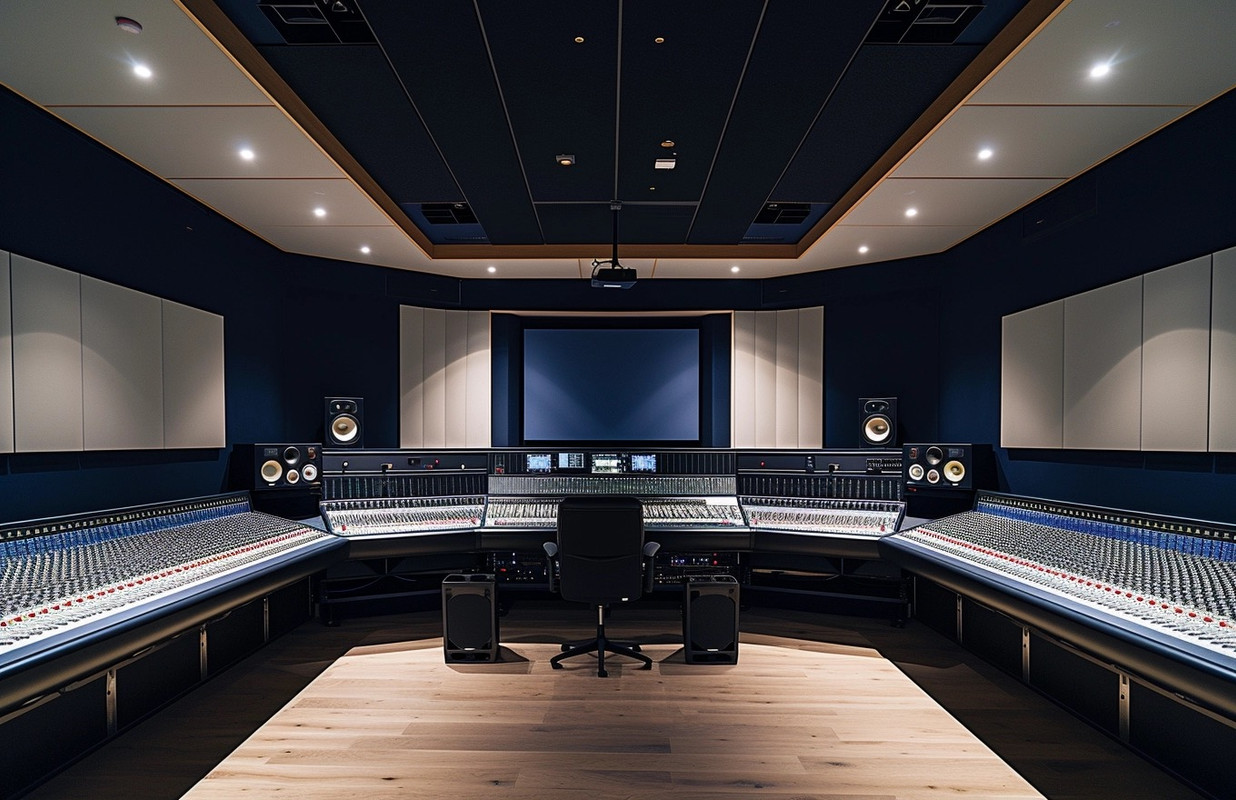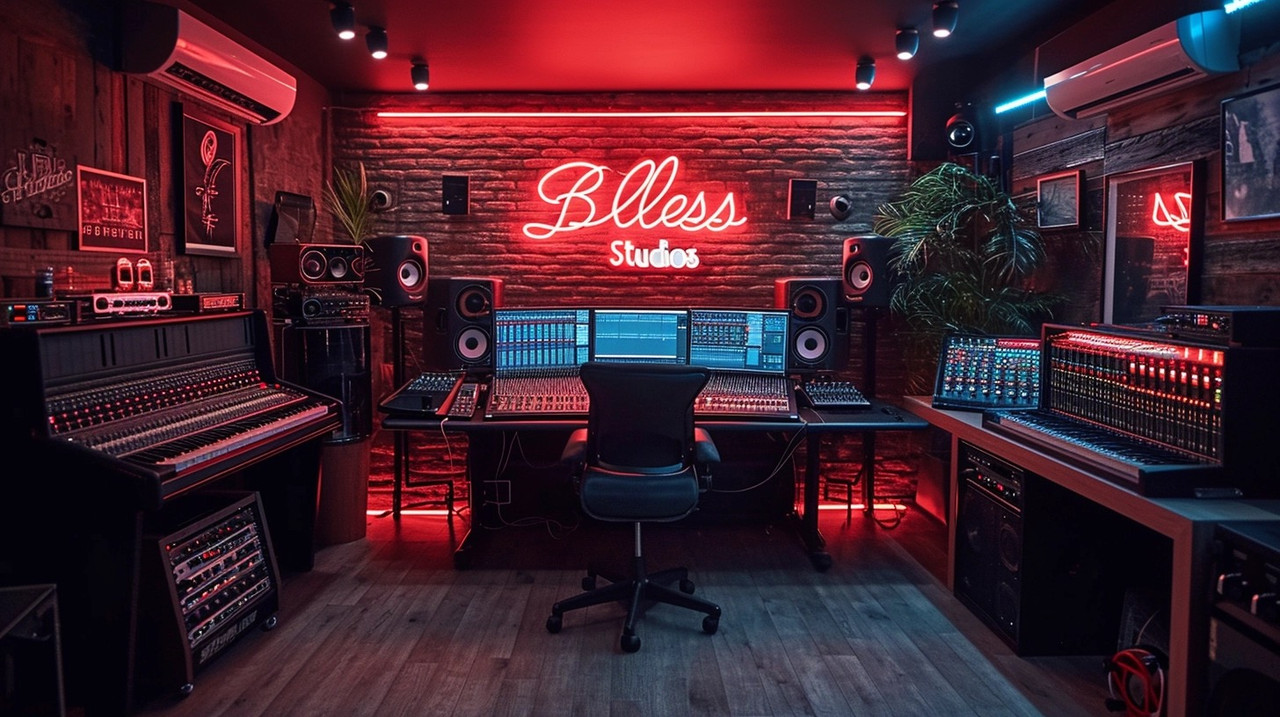

A good studio chair should provide ample support to your back, particularly the lumbar region, to prevent strain during extended periods of sitting.
Finally yet importantly, aesthetics should not be overlooked. The design of the chair should support your body's natural posture, reducing strain on your back, neck, and limbs. Next emerges a leviathan clad in leatherette; it boasts hydraulics that pirouette gracefully beneath pressures exerted by restless composers chasing elusive chords into dawn’s embrace. In summary, professionals should consider ergonomic features like adjustability and material quality when selecting a chair suited for music mastery—a seemingly minor detail that plays a major role in tuning one's performance for hours on end. Balance cost against features; investing in a quality chair can save you from future back concertos (the painful kind) down the road.
Another aspect commonly overlooked but tremendously influential is ergonomics. Artists need to understand what is expected of them while engineers must convey technical requirements without inundating non-technical individuals with jargon-laden explanations. This nonsensical insertion disrupts our understanding of what makes the Harmony ErgoTune Supreme so desirable among artists seeking both comfort and posture perfection. One often overlooked element in a studio setting is the chair you sit in for countless hours.
Chairs with variable height settings allow you to align your ears with monitor speakers accurately—this aids in achieving precise stereo imaging and frequency response during critical listening periods. Another vital factor is durability and quality construction. Breathable fabrics prevent overheating during intense rehearsals while sturdy construction ensures stability when shifting positions or emoting passionately through a piece.
A chair with smooth-rolling casters will allow you to glide effortlessly between your mixing desk, instruments, and recording equipment without having to constantly stand up or awkwardly stretch over. Creating a comfortable and ergonomic workspace is crucial for up-and-coming musicians who spend countless hours practicing and recording. A comfortable chair contributes positively to our focus and efficiency. Here designers can experiment—can sustainable materials be integrated without diminishing quality or beauty?


An optimal chair allows you to sit firmly with your feet planted on the ground while leaving a small gap between your knees and the edge of the seat. Another key element contributing to its comfort is its environmentally conscious construction. It's less about grandeur or aesthetics and more about ergonomics and personal well-being. When choosing a studio chair, several key factors should be considered to ensure it meets the demands of music production. Ergonomic design is at the heart of these specialized chairs.
A top-rated studio chair isn't just furniture; it’s an indispensable companion on your creative journey—a steadfast ally ensuring every note is hit with precision because you stayed comfy through those intense mixing marathons. Leather chairs can symbolize opera’s grandiosity but might not breathe well during extended sessions. Stress (biology) Ergonomic seating allows users to maintain a neutral spine position, reducing pressure on intervertebral discs and minimizing muscle tension throughout the back, neck, shoulders, and arms. Moreover, time equals money in any production environment - be it music, video editing, or graphic design - and efficiency is king.
A poorly designed chair can lead to discomfort, fatigue, and even chronic pain over time. The aesthetics of these chairs are not merely a byproduct of function but an intentional dialogue with the very essence of style. Adjustable in every sense, from armrest height to lumbar support tension, this chair adapts to you rather than demanding your adaptation to it. Being able to adjust these elements ensures that your body maintains an optimal posture throughout your session.
The first enigmatic contender is a chair draped in moonlight velvet—a peculiar choice for studios drenched in shadow and sound waves. This pursuit of auditory bliss can span hours, if not days - a testament to the dedication required to birth a musical masterpiece. Certainly! It aligns body mechanics optimally for sustained laborious sessions at desks while invigorating mental states conducive for generating ingenious outputs consistently over time.
The adjustable armrests cater to various instrument playing heights, providing essential support for shoulders and arms. This fluid movement can preserve energy and maintain creative focus. This visual harmony creates an ambiance conducive to uninhibited expression.
The quest for the perfect studio chair resembles searching for a needle in a haystack. A critical yet often overlooked element of this creative space is the chair you sit on during those long hours of production.
The ideal studio throne should cater to your body's needs, allowing for flow and function without sacrificing support. These tools enable workers to alternate between sitting and standing positions seamlessly throughout the day without interrupting workflow efficiency.
Features such as adjustable height, lumbar support, and armrests that can be tailored to suit your physical dimensions will minimize discomfort and distraction. Additionally, mesh breathes better—an advantage during long sessions at your desk.

Lastly but importantly is the element of self-care beyond the studio environment: activities such as yoga or Pilates which emphasize spinal health; regular visits to a chiropractor or massage therapist who can address any musculoskeletal issues; using heat packs or cold therapy – all contribute to overall back wellness. It might seem trivial at first glance, but the right studio chair can significantly elevate your music creation sessions. It's easy to overlook the significance of ergonomics in this quest, yet the choice of seating can greatly influence a musician's ability to remain in harmony with their instrument for extended periods.
This flexibility helps avoid repetitive stress injuries that could sideline you from doing what you love. Choose a chair with adjustable features—think lumbar support that defies gravity or armrests that refuse conformity—allowing you to orchestrate your ideal sitting posture.
But what about aesthetics?
The material of the chair also matters greatly in terms of comfort and durability. While it may seem improbable to score a high-quality chair through these channels, many people have found incredible bargains on items barely used by their previous owners. Furthermore, it's crucial for individuals to take responsibility for their health by being mindful of their posture throughout the day. Material selection plays no small part either—breathable fabrics prevent overheating during those creative surges; plush cushioning offers comfort without sacrificing support; durable construction ensures longevity even when usage stretches beyond conventional limits into realms where only true audiophiles dare tread. Such knowledge empowers individuals with strategies for self-care which ultimately leads to healthier lifestyles both inside and outside the workplace.
As we delve into finding the best chairs for enduring studio sessions, we'll consider key features that contribute to a supportive seating experience. A chair should offer versatile adjustments – from seat height and tilt to lumbar support and armrest positioning – ensuring that it can conform to various body types and preferences. DIY solutions present another improbable but effective route. Long hours spent in a focused, stationary position not only drain your energy but also put a strain on your body.
Whether for painter's caverns, minstrel nests or weaver’s lairs, every stool must juggle twin enchantments." Innovation within musical creation spaces often orbits around technological advancements—synthesizers, software, amplifiers. Ultimately, investing in an excellent studio chair elevates your music production environment. Stay Hydrated: Drink plenty of water throughout the day to stay alert and maintain energy levels.4.
This evolution symbolizes a broader shift towards recognizing the importance of human-centric design—not merely as an afterthought but as a fundamental consideration shaping how tools enhance our abilities rather than impose limitations upon them. When embarking on this journey, comfort reigns supreme. Mixing music for extended periods can be an exhilarating experience, immersing oneself in the creative flow and refining sounds to perfection. Its armrests arc like crescendos cradling forearms weary from conducting symphonies of sliders and dials.
Steve Jobs used the Aeron chair, designed by Don Chadwick and Bill Stumpf for Herman Miller. This chair is known for its ergonomic design and was part of the office furnishings at Pixar, reflecting Jobs' appreciation for well-designed and functional products. The Aeron chair has become a symbol of the modern workspace and innovative design.
Ergonomic chairs are considered the best style of chairs for lower back pain. They are designed to support the natural curve of the spine, ensuring proper posture while sitting. Features such as adjustable lumbar support, seat depth, and armrests allow for a customized fit that can significantly reduce discomfort and strain on the lower back.
Shaq trainers are relatively inexpensive because they are designed to be affordable and accessible to a wide audience, including families and children who may not be able to afford high-end athletic shoes. The brand, associated with former NBA player Shaquille O'Neal, focuses on providing value by offering decent quality footwear at lower price points. Additionally, they are often manufactured with cost-effective materials and distributed through mass-market retailers, which helps keep the prices low.
The office chair known as America's best-selling chair is the Aeron Chair by Herman Miller. It has gained widespread acclaim for its ergonomic design, adjustability, and overall comfort, making it a favorite in offices across the United States.